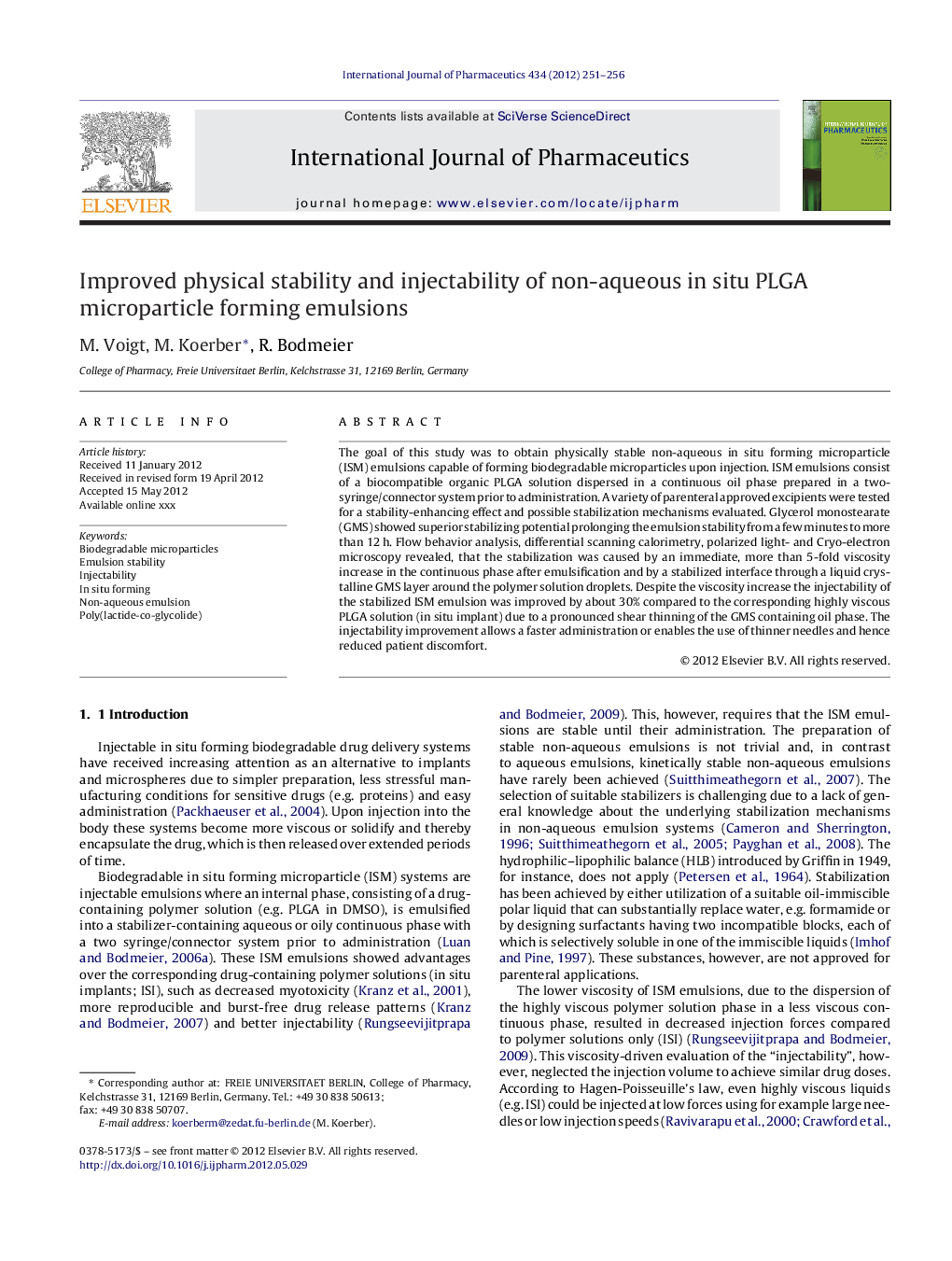| Article ID | Journal | Published Year | Pages | File Type |
|---|---|---|---|---|
| 5820506 | International Journal of Pharmaceutics | 2012 | 6 Pages |
Abstract
The goal of this study was to obtain physically stable non-aqueous in situ forming microparticle (ISM) emulsions capable of forming biodegradable microparticles upon injection. ISM emulsions consist of a biocompatible organic PLGA solution dispersed in a continuous oil phase prepared in a two-syringe/connector system prior to administration. A variety of parenteral approved excipients were tested for a stability-enhancing effect and possible stabilization mechanisms evaluated. Glycerol monostearate (GMS) showed superior stabilizing potential prolonging the emulsion stability from a few minutes to more than 12Â h. Flow behavior analysis, differential scanning calorimetry, polarized light- and Cryo-electron microscopy revealed, that the stabilization was caused by an immediate, more than 5-fold viscosity increase in the continuous phase after emulsification and by a stabilized interface through a liquid crystalline GMS layer around the polymer solution droplets. Despite the viscosity increase the injectability of the stabilized ISM emulsion was improved by about 30% compared to the corresponding highly viscous PLGA solution (in situ implant) due to a pronounced shear thinning of the GMS containing oil phase. The injectability improvement allows a faster administration or enables the use of thinner needles and hence reduced patient discomfort.
Keywords
Related Topics
Health Sciences
Pharmacology, Toxicology and Pharmaceutical Science
Pharmaceutical Science
Authors
M. Voigt, M. Koerber, R. Bodmeier,
